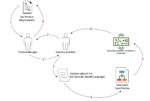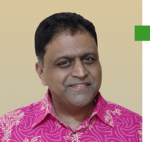Sondrel is the trusted partner of choice for handling every stage of an IC’s creation. Its award-winning define and design ASIC consulting capability is fully complemented by its turnkey services to transform designs into tested, volume-packaged silicon chips. This single point of contact for the entire supply chain… Read More
Tag: pcie
Benefits of a 2D Network On Chip for FPGAs
The reason people love FPGAs for networking and communications applications is because they offer state of the art high speed interfaces and impressive parallel processing power. The problem is that typically a lot of the FPGA fabric resources are used simply to move the data on or off and across the chip. Achronix has cleverly … Read More
Identity and Data Encryption for PCIe and CXL Security
Privacy and security have always been a concern when it comes to computing. In prior decades for most people this meant protecting passwords and locking your computer. However, today more and more users are storing sensitive data in the cloud, where it needs to be protected at rest and while in motion. In a Synopsys webinar Dana Neustadter,… Read More
Low Power High Performance PCIe SerDes IP for Samsung Silicon
No matter how impressive the specifications are for an SoC, the power performance and area of the finished design all depend on the IP selected for the IO blocks. In particular, most SOCs designed for consumer and enterprise applications rely heavily on PCI Express. Because PCIe analog IP is critical to design success, Samsung … Read More
PCIe Gen5 Interface Demo Running on a Speedster7t FPGA
The major market drivers of today all have one thing in common and that is the efficient management of data. Whether it is 5G, hyperscale computing, artificial intelligence, autonomous vehicles or IoT, there is data creation, processing, transmission and storage. All of these aspects of data management need to happen very fast.… Read More
PCIe Gen 6 Verification IP Speeds Up Chip Development
PCIe is a prevalent and popular interface standard that is used in just about every digital electronic system. It is used widely in SOCs and in devices that connect to them. Since it was first released in 2003, it has evolved to keep up with rapidly accelerating needs for high speed data transfers. Each version has doubled in throughput,… Read More
CEO Interview: Deepak Shankar of Mirabilis Design
The founder of Mirabilis Design, Mr. Shankar has over two decades of experience in management and marketing of system level design tools. Prior to establishing Mirabilis Design, he held the reins as Vice President, Business Development at MemCall, a fabless semiconductor company and SpinCircuit, a joint venture of industry… Read More
PCIe 6.0 Doubles Speed with New Modulation Technique
PCI-SIG has held to doubling PCIe’s data rate with each revision of the specification. The consortium of 800 companies, with its board consisting of Agilent, AMD, Dell, HP, Intel, Synopsys, NVIDIA, and Qualcomm, is continuing this trend with the PCIe 6.0 specification which calls for a transfer rate of 64 GT/s. PCI-SIG released… Read More
How PCI Express 6.0 Can Enhance Bandwidth-Hungry High-Performance Computing SoCs
What do genome sequencing, engineering modeling and simulation, and big data analytics have in common? They’re all bandwidth-hungry applications with complex data workloads. High-performance computing (HPC) systems deliver the parallel processing capabilities to generate detailed and valuable insights from these applications.
Using IP Interfaces to Reduce HPC Latency and Accelerate the Cloud
IDC has forecasted that over the next five years, the Global Datasphere — the amount of data that’s created, transferred over the network and stored each year — will increase by over 3X to 175 zettabytes (Figure 1). Much of this is driven by the Internet of Things (IoT), video applications (including video streaming,… Read More











